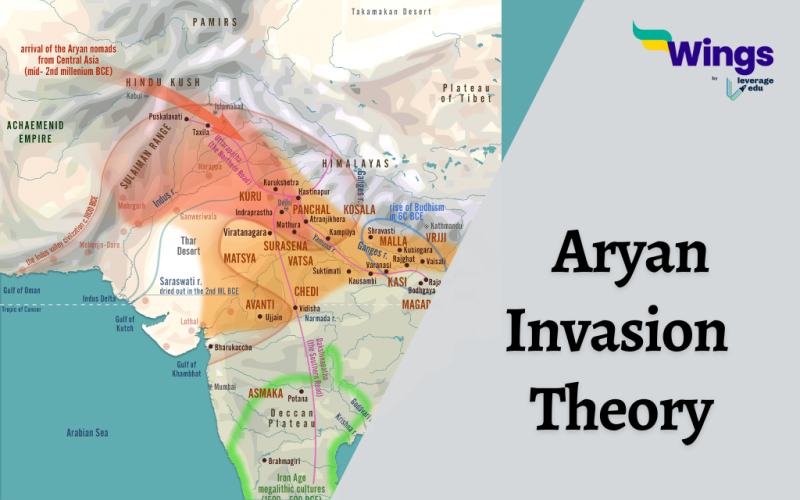In the 20th century, a theory developed that the Indus Valley Civilization was completely decimated by a race of people called the Aryans that had invaded the northern parts of India. On the contrary, the people who disagree say that the theory was brought forth to justify the British invasion of India and has no genetic or archaeological basis.
Table of Contents
What is the Background of the Aryan Invasion Theory?
The Aryan Invasion Theory is a topic of immense debate and controversy as the research has led to no conclusive evidence of them invading or not invading India. Though, Max Mueller, an orientalist and philologist states that there are similarities between the various languages found in India and Europe. Furthermore, languages like Sanskrit, Latin, Greek, German, Spanish and French do have certain likenesses. He theorised that the Aryans either invaded or migrated towards India.
In addition, some believe that the original inhabitants of India, who were the Dravidians, were killed by the Aryans when they invaded. Moreover, others seem to believe that instead of the Harappa Civilization, the Aryans are the true roots of India as we know it today.
At the same time, people believe that the British introduced the Aryan Invasion theory because it justified their colonialism in India and other countries. Moreover, discrimination and segregation due to skin colour are also propagated due to this theory. The British believed that since they were of a fairer tone, they had the authority to conquer those on the other end of the spectrum.
Furthermore, the practice of the caste system that is sometimes witnessed in India is also said to be similar to that of the Aryans.
What do sources say about the Aryan Invasion?
The Aryans arrived in India slightly before 1500 B.C. and communicated in Indo-European languages. Moreover, they mainly engaged in pastoral activities whereas agriculture served as a secondary objective in their society. The Aryans were portrayed male dominance and their lifestyle mostly revolved around the use of horses.
The Rig Veda is the oldest text in Indo-European languages that mentions the term ‘Arya’ 36 times. In addition, comprising a collection of prayers, the Rig Veda shares some similarities with the Avesta which is the oldest text in the Iranian language.
Additionally, the Aryan migration to India occurred in multiple phases, thus leading to conflicts with indigenous inhabitants such as dasas and dasyus. Interestingly, these indigenous groups are also referenced to in ancient Iranian literature, further suggesting a connection to early Aryans.
Lastly, beyond migration and conflict, the Aryans are credited with introducing the spoked wheel which originated in the Caucasus around 2300 B.C. The Aryans’ success in India can be attributed to innovations like chariots and superior bronze weaponry. The Rig Veda also reveals their familiarity with land routes, thus referencing the term ‘Samudra.’
Also Read: The Vedic Period
Is the Aryan Invasion Theory true?
The Aryan invasion theory has multifarious versions for it to be true. Nonetheless, this is still a debatable and complex issue that will always be arguable for many reasons until and unless genetic research is done thoroughly. Genetic research will give answers to many debated questions once and for all.
Relevant Blogs
FAQs
The Aryans came to capture, conquer, and invade India. The Rig Veda does mention their coming sometime before 1500 B.C.
Before the Aryan Invasion, the original inhabitants were known to be dasas. The Aryans brought along with them horses and armaments.
We hope you liked what you read. If you want to read more articles like this you can visit our general knowledge page on Indian History!
 One app for all your study abroad needs
One app for all your study abroad needs













